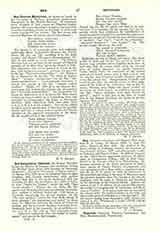

Rex Sempiterne Caelitum, the Roman Breviary hymn for Matins of Sundays and weekdays during the Paschal Time (from Low Sunday to Ascension Thursday). Cardinal Thomasius (“Opera omnia”, II, Rome, 1747, 370) gives its primitive form in eight strophes, and Vezzosi conjectures, with perfect justice, that this is the hymn mentioned both by Caesarius (d. 542) and Aurelianus (d. c. 550) of Arles, in their “Rules for Virgins”, under the title “Rex xterne domine”. Pimont (op. cit. infra, III, 95) agrees with the conjecture, and present-day hymnologists confirm it without hesitation. The hymn is especially interesting for several reasons. In his “De arte metrica” (xxiv) the Ven. Bede selects it from amongst “Alii Ambrosiani non pauci” to illustrate the difference between the metre of Classical iambics and the accentual rhythms imitating them. Ordinarily brief in his comment, he nevertheless refers to it (P.L., XC, 174) as “that admirable hymn … fashioned exquisitely after the model of iambic metre” and quotes the first strophe:
Rex aeterne Domine,
Rerum Creator omnium,
Qui eras ante saecula
Semper cum patre filius.
Pimont (op. cit., III, 97) points out that, in its original text, it is amongst all the hymns, the one assuredly which best evidences the substitution of accent for prosodical quantity, and that the (unknown) author gives no greater heed to the laws of elision than to quantity “qui eras”, “mundi in primordio”, “plasmasti hominem”, “tune imagini”, etc. The second strophe illustrates this well:
Qui mundi in primordio
Adam plasmasti hominem,
Qui tune imagini
Vultum dedisti similem.
Following the law of binary movement (the alternation of arsis and thesis), the accent is made to shorten long syllables and to lengthen short ones, in such wise that the verses, while using the external form of iambic dimeters, are purely rhythmic. Under Urban VIII, the correctors of the hymns omitted the fourth stanza and, in their zeal to turn the rhythm into Classical iambic dimeter, altered every line except one. Hymnologists, Catholic and non-Catholic alike, are usually severe in their judgment of the work of the correctors; but in this instance, Pimont, who thinks the hymn needed no alteration at their hands, nevertheless hastens to add that “never, perhaps, were they better inspired”. And it is only just to say that, as found now in the Roman Breviary, the hymn is no less vigorous than elegant.
H. T. HENRY

